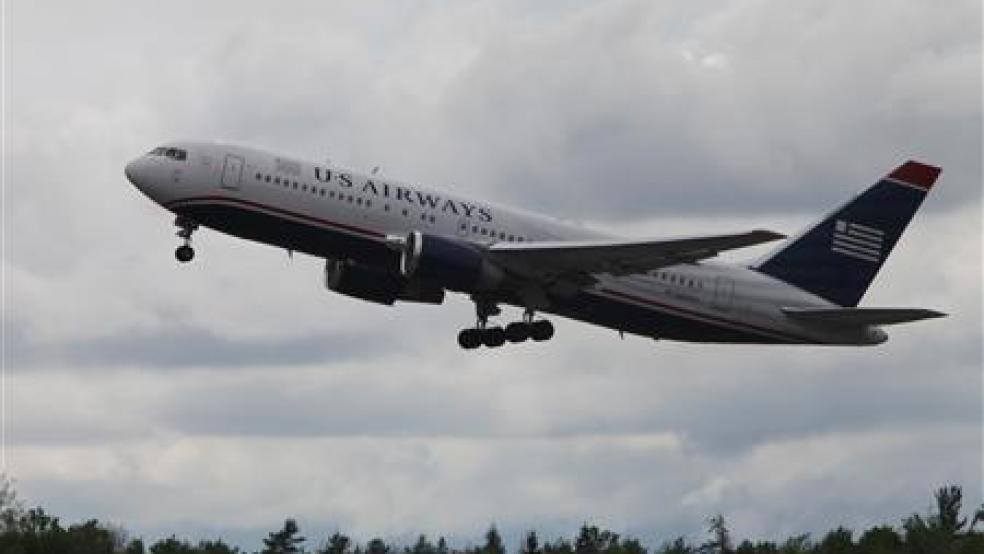For years the federal government has experimented with corporatizing or privatizing vital services – everything from providing mortgages to running a railroad system. But what about doing the same with federal air-traffic controllers?
On the same day a German airliner went down in the French Alps on Tuesday, with all 150 passengers and crew presumed dead, a House of Representatives aviation subcommittee held a hearing on a plan to spin off the nearly 15,000 air-traffic cops from the Federal Aviation Administration to a new semi-private corporation.
Related: Congress Enraged by the FAA’s $40B White Elephant
The seemingly high-stakes government overhaul proposal is the brainchild of Rep. John L. Mica (R-FL). He’s a longtime critic of FAA’s management style and its halting progress in implementing a $40 billion project to modernize the air traffic control system known as NextGen.
With so much waste and duplication in the federal bureaucracy, almost any idea to improve efficiency and performance should get a close look, provided it doesn’t pose a serious risk to the public’s safety or well-being.
Mica’s plan falls somewhere in the gray area. It seeks to reboot a long-maligned agency and improve working conditions for air traffic controllers as well as improve the quality of oversight by Congress and the administration.
Mica’s proposal, in a nutshell, is to transfer the traffic controllers to a new quasi-private corporation. This new entity would oversee the takeoff, flights and landings of commercial airliners while leaving it to the scaled back FAA to continue enforcing aviation safety regulations. The new corporate entity would also assume responsibility carrying out the NextGen project.
Related: Drones Pose Fresh Threat to Commercial Flight Safety
The FAA has been battered for years by the Government Accountability Office and the Transportation Department’s Inspector General for falling behind schedule and running over budget with NextGen. Launched a decade ago by the FAA, Next-Gen was created as a complex interconnected array of new technologies. The intention was to reduce flight delays and lower fuel consumption and carbon emissions that contribute to global warming, as previously reported here.
The cost would run about $40 billion through 2025 and would be borne by both the government and the airline industry. That means higher taxes on consumers and higher airline ticket fees. FAA officials insist they’ve made important progress recently but many on Capitol Hill see the project as a costly white elephant.
Mica, a former chair of the House Transportation Committee, said the time to act on the project was now, according to The Washington Post.
Tampering with something as complex and sensitive as the nation’s air traffic control system is high risk at best, especially if a fractious Congress has anything to do with it. While Congress has plenty of experience in consolidating agencies under one umbrella – as it did in creating the Department of Homeland Security after the 9/11 terror attacks – cutting loose a critical function like air traffic controlling would likely require precise administrative choreography and a bit of luck.
Related: Why Infrastructure Investment Is a No-Brainer Payoff
Other lawmakers at yesterday’s hearing, such as Rep. Peter A. DeFazio (D-OR) and Rep. Rick Larsen (D-WA), said they had dozens of questions about the proposal before they could sign off on such an approach.
The U.S., however, would not be the first to attempt such a high-wire government feat. New Zealand created the first air traffic control corporation in 1987. Other self-supporting air navigation service providers followed in Australia, Canada, Europe and the U.K.
Moreover, the plan drew surprisingly strong backing from Paul Rinaldi, president of the air traffic controllers union; Douglas Parker, chief executive for American Airlines who represented a coalition of major U.S. airlines; and representatives of libertarian and conservative think tanks, according to The Washington Post.
Robert Poole, director of transportation policy at Reason Foundation, a non-profit think tank, spelled out the longstanding problems of the FAA’s Air Traffic Organization. They include uncertain government funding to undertake large-scale capital modernization programs such as NextGen, too much meddling and oversight by Congress and the executive branch, and “an organizational culture that is very risk-averse and status-quo oriented.”
Related: Your Next Flight Could Be Hit By a Cyber Attack
The Air Traffic Organization is subject to review by the FAA Administrator, the Transportation Secretary, the Transportation Department’s inspector general, the Office of Management and Budget, the GAO, and scores of lawmakers and oversight and authorizing committees on Capitol Hill.
“After three decades of research … my conclusion is that the nonprofit corporation model with stakeholder governance is the best organizational form,” Poole testified. “In particular, it is most likely to produce the kind of organizational culture we need to regain U.S. leadership in air traffic control.”
Poole’s recommendations include creating a separate air traffic control corporation, shifting some user fees from the government to the new structure, and making other stakeholders, including airlines, passengers and airports, responsible for overseeing and funding the new system.
Top Reads from The Fiscal Times:





